Chapter 2
Putting Your Data and Media on the iPhone
So, you've unboxed your iPhone and connected it to iTunes. Now what? Chapter 1 briefly introduced the basics of syncing your iPhone with your music, movies, photos, and other data via iTunes. Now this chapter explores the options you have for syncing your data with your iPhone. Whether you've bought your songs and videos from the iTunes Store or have imported them into the program from CDs and DVDs, iTunes can synchronize your iPhone to nearly any content in its library. If you want a rich media and applications library on your iPhone, you need to sync those contents from the library on your computer.
iTunes determines which app, music, and video files transfer to and load onto your iPhone. You're about to discover how to bring all this content together in iTunes and send it to your iPhone via the USB-to-dock connector data cable. You'll see how to choose which items you want to synchronize and how to keep your iPhone content fresh and up-to-date.
With iOS 5, you don't need to own a computer to use an iPhone. The Apple Store will help you set up your device wirelessly out of the box. You can back up and restore your device automatically using iCloud. For the most part, this chapter isn't about that kind of device management. You'll read about using iTunes to synchronize and control your iPhone content using the traditional synchronization cable, with a few words toward the end regarding iCloud-based computer-free operation.
Syncing
Before you begin to choose which songs, videos, podcasts, and audiobooks will be synchronized using iTunes, you physically connect your iPhone to your computer and launch the iTunes application. Use the USB cable that shipped with your iPhone (or an equivalent dock) to connect your device to a spare USB port on your system. Launch iTunes by clicking the iTunes application icon on your computer. If your iPhone uses a lock code, you must unlock your device before iTunes can connect to it
The first time you sync your iPhone with your iTunes library, you need to do it via the USB docking cable. After that, you can sync it with your iTunes library via the USB cable that came with it or do so wirelessly as long as the iPhone is on the same wireless network as your computer is. Once connected via either of these methods, your iPhone appears in the list on the left side of the iTunes window (you can see it later in Figure 2–3). This light blue column, called the source list, is divided into several sections for your media library, the iTunes Store, your devices, and your playlists.
If you do not see your iPhone in this list, make sure you've physically connected it with the USB cable. Verify that the cable is firmly inserted into both the computer and the iPhone if you are doing a hard-line connection, or make sure that your iPhone and computer are both connected to the same wireless network. Be sure your iPhone is powered on. It is listed in iTunes when it's active or asleep, but it won't show up if powered down.
The iPhone iTunes Device Window
When the iPhone is plugged into your computer, it automatically appears in your iTunes source list under Devices. Click the name of your iPhone in the source list to open its preferences in the main iTunes window (see Figure 2–1). You'll see a series of tabs along the top of the window that allow you to set options associated with your iPhone. The tabs you'll see (from left to right) include Summary, Apps, Ringtones, Music, Movies, TV Shows, Podcasts, Books, Photos, and Info.
Along the bottom of the iPhone preferences window you'll find a long, colorful Capacity bar (see Figure 2–2). This bar appears regardless of what tab you have selected, displays the total storage capacity of the iPhone, and breaks down the amount of data you have on the device in color-coded segments along the bar. Blue is for audio, purple is for video, orange is for photos, green is for apps, lighter purple-pink is for books, yellow is for other stuff (mostly data and the operating system), and gray is for the remaining free space you have on your iPad. The key just below the Capacity bar shows what each color segment represents and the amount of space occupied per category.
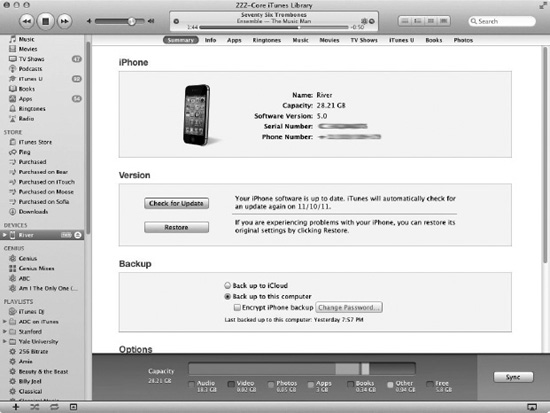
Figure 2–1. iTunes allows you to manage the content loaded onto and synchronized with your iPhone. Each tab at the top of the window offers a variety of controls, allowing you to choose what information is loaded onto your iPhone at each sync.

Figure 2–2. The Capacity bar is a visual representation of the different types of files occupying space on your iPhone.
NOTE: The Capacity bar breakdown is pretty self-explanatory. Still, some people are thrown by yellow—the color that represents Other. What is “Other,” exactly? This includes database files (which keep track of your music, video, and podcast libraries), which can be 100MB to 200MB in size; album artwork (which can be 500KB per track); and preference files for the applications you have on your iPhone. Preference files let the apps remember in-app settings you've configured every time you launch them. If you store a lot of data inside your applications, the green Apps segment increases accordingly.
A Word on Syncing Your Data
The current iPhones hold a lot of data. But many of us have music or movie libraries that are far larger than even the storage in the most capacious iPhone. Apple devised sync preferences to help organize and select your most important data and move it to the iPhone.
If you have a 32GB iPhone and a 40GB music library, not only will you not be able to fit all your music onto the device, but if you filled that 32GB with your music library, you'd have no room for photos, movies, books, or apps. The following tabs that I discuss can help in selecting what to sync to your iPhone.
NOTE: Applications like Air Video, Dropbox, LogMeIn, and Air Sharing Pro provide ways to offload local storage to remote servers, letting you free up space on your iPhone. Instead of synchronizing entire movies, Air Video streams media from your home computer to your device wherever you have an available Internet connection. Dropbox, LogMeIn, and Air Sharing Pro each let you transfer data to and from remote servers (Dropbox and Air Sharing Pro) or your home or office desktop (LogMeIn and Air Sharing Pro).
Although you most likely won't be able to fit all of your music, photos, and movies onto the iPhone, you don't have to do so. You can keep changing what you put on the iPhone. For example, once you've watched a movie on your iPhone, you can remove it and replace it with another one. Also, some files are larger than others. For example, don't worry about syncing all of your contacts, calendars, and book collections onto your iPhone. These are all text-based files, and text takes up very little storage.
Where Do I Get My Media From?
The iPhone is a great device for consuming media. But where do you get that media? The easiest and most direct way to get movies, music, TV shows, and books onto your iPhone is through the iTunes Store (see Figure 2–3). In the iTunes Store, you can buy music (a song or an entire album), rent or purchase movies, download your favorite TV shows by the episode or subscribe to a Season Pass, and download free podcasts and iTunes U content.
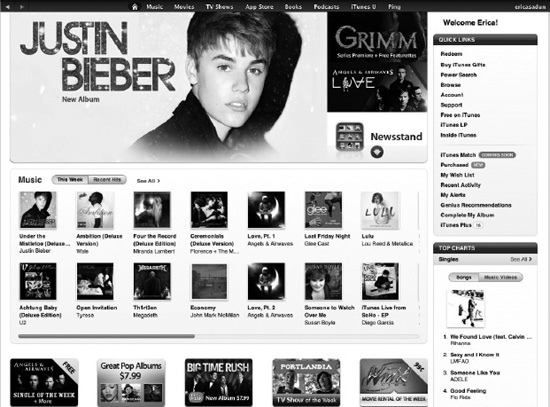
Figure 2–3. The iTunes Store is the world's largest music store. You can also download movies, TV shows, apps, podcasts, and books from it.
You can also import music and movies from your own collections. Importing music from CDs is straightforward using iTunes, as is importing video. One way to get movies onto your iPhone is to rip them from your DVD collection.
NOTE: Ripping a DVD means copying content from the disc into a format that's playable on other devices, including iPhone devices. To load video from your DVDs onto your iPhone, download a copy of HandBrake from http://handbrake.m0k.org (for both Windows and Mac), and convert your DVD content to an iPhone-friendly format. HandBrake is free and easy to use. Insert your DVD into your computer, run the application, and follow the directions in the program. After your movie has finished ripping, you must then add it to iTunes by dragging and dropping the movie file onto your Movies library in the source list.
The only Apple-approved consumer-specific way to get applications onto your iPhone is by using the iTunes App Store. You can easily browse for apps from the desktop version of iTunes or in the dedicated App Store app on the iPhone.
You can build your iPhone e-book library in a variety of ways. Perhaps the easiest is to buy titles through Apple's iBookstore, which is part of Apple's free-to-download iBooks app. You can also take advantage of the more than 33,000 free e-books at Project Gutenberg (www.gutenberg.org) by downloading books to your downloads folder and then dragging them into iTunes. There are also many e-book stores and publishers that sell e-books directly online. For a good list of web sites that sell e-books, go to www.epubbooks.com/buy-epub-books.
iBooks also supports PDF files. You can purchase inexpensive PDF versions of popular titles from many vendors. Some publishers, like Baen Books, sell DRM-free PDF editions directly on their web site. They also offer an extensive free eBook collection (www.baen.com/library/) that's well worth checking out.
NOTE: E-books come in many formats. The format compatible with the iPhone's iBooks app is ePub. Make sure when buying an e-book outside the iBookstore that it is in ePub or PDF format, or else you'll need to find another app that reads the format your e-book is in. Books from Amazon's Kindle Store are an example of this. Kindle books can be read on the iPhone, but not in the iBooks app. You need to download Amazon's Kindle app for the iPhone to read e-books purchased from Amazon or use Amazon's Cloud Reader web app. The latter is available at http://read.amazon.com and allows quick downloading of your books to the iPhone for offline reading.
Remember to Apply Your Changes
After making any of the choices I discuss in the following sections, note that they do not become finalized until you click the gray Apply button to the right of the Capacity bar (see Figure 2–4). Don't worry if you forget to click it, because iTunes automatically reminds you before you navigate away from the iPhone preferences window. Don't panic if you make a change in the preferences by mistake because you can always click the Revert button that sits above the Apply button.

Figure 2–4. The Revert and Apply buttons (boxed) allow you to accept or negate any of the changes you have made in iTunes' iPhone preferences window.
The Tabs
The tabs (see Figure 2–5) running along the top of the iPhone preferences window are how you navigate all your iPhone settings. There are ten tabs in total: Summary, Apps, Ringtones, Music, Movies, TV Shows, Podcasts, Books, Photos, and Info. To begin configuring the settings under any tab, just click the tab to select it.
Figure 2–5. Each setting tab offers a different way to control the way that iTunes synchronizes your iPhone to your home media library.
The Summary Tab
The Summary tab (see Figure 2–6) is the first tab visible in the iPhone preferences window. It displays an overview of your iPhone including its name, capacity, currently installed firmware version, and serial number. From this page, it's also possible to check for firmware updates, restore your iPhone to a pristine factory-installed condition, and set options to help you manage the way your data is synced. The page is broken up into several boxes: iPhone, Version, Backup, and Options.
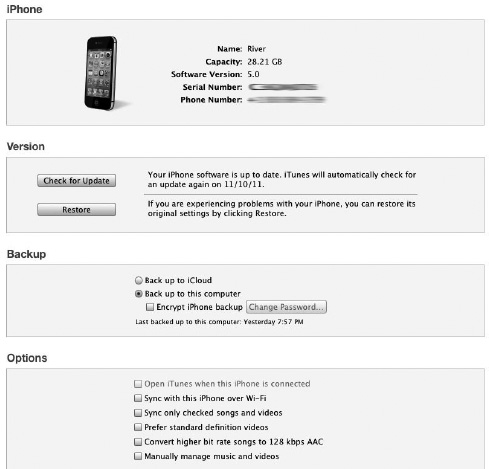
Figure 2–6. The Summary tab provides an overview of your iPhone's make and model.
iPhone Box
In this box, an image of your model of iPhone is displayed along with its name, capacity, software version, and serial number. The iPhone image should match the model and color of your device.
Name: This is whatever name you have given your iPhone. To rename it, click the iPad in the source list. This opens a text edit field around the name. Edit the name as desired (see Figure 2–7), and then press Return or Enter to confirm your change.
Capacity: This number indicates the actual data capacity of your iPhone. As with all data storage, the advertised capacity (32GB, for example) never quite matches the actual capacity (28.21GB).
Software Version: The iPhone regularly updates its software with bug fixes and improvements. iTunes indicates which firmware release is currently installed on your iPad. Click the phrase Software Version to switch to the Build Version display, showing which firmware build you are using.
Serial Number:This unique serial number identifies your iPhone to Apple. Click the phrase Serial Number to reveal your unit's UDID, or unique device identifier.
Phone Number:This is the phone number associated with your iPhone. For GSM units, you can click the phrase to reveal the unit ICCID (where appropriate), the number used to identify your Subscriber Identity Module (SIM). This is a unique number assigned to a SIM card in a GSM phone.
The only things that could ever change in this box are your iPhone's software version number and your iPhone's name. When you perform a software update on the iPhone, the new version number appears in this box. It's an easy way to tell which version of iOS (the operating system used on Apple's iPod touch devices, iPhones, and iPads) you are using. If you change the name of your iPhone by double-clicking its name in the iTunes source list (see Figure 2–7), the name change is updated here. Your iPhone's capacity and serial number never change.
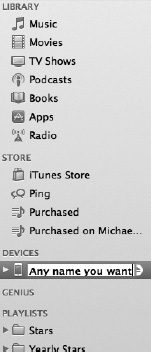
Figure 2–7. Double-click your iPhone's name in the iTunes source list. You can rename it to anything you want. The name change will be reflected on the Summary tab.
NOTE: You bought a 32GB iPhone, but you notice that the capacity states your device has only 29.21GB of storage. What gives? Whenever you buy an electronics device that offers storage capacity, the advertised amount of storage is always more than the actual storage available to you. Why? Several reasons. One is because the device's operating system must be stored on the same disk as your files. Without the OS, your device could not function. In this case, the iPhone's OS takes up almost 2GB of space. Another, more technical reason is because storage size can be measured in binary or decimal measurements. Binary says 1KB is equal to 1,024 bytes, while decimal says 1KB is equal to 1,000 bytes. When advertising storage space, companies choose to use the decimal measurement, which ends up showing more space than is actually available to you.
TIP: Use the serial number to check your current warranty status at the Apple Self Solve web site (https://selfsolve.apple.com/GetWarranty.do). There, you can see whether you have properly registered your device, whether you have active telephone technical support service, whether you are covered for repairs and service, and the details about your AppleCare protection plan. If you have not yet signed up for AppleCare service for your new iPhone, you can do so directly at the Self Solve site. It prompts you for billing information and processes your credit card payment. AppleCare extends your iPhone coverage to two years from the purchase date of your hardware. AppleCare+, which adds accidental damage coverage, can be purchased only at the same time as your device.
NOTE: You can use the UDID to register your iPhone for certain developer beta tests (called ad hoc builds). Copy this value to memory via Edit ![]() Copy and then paste it into an e-mail to send your UDID to a developer. Although your UDID is not a particularly sensitive piece of information, you probably should not share it freely with others, just in case some as-yet-unknown exploit finds a use for UDIDs. Send it only to trusted developers, who will register it at Apple to enroll you in their ad hoc distribution program. Another, simpler way to share your UDID with others is to download the free Ad Hoc Helper application from the App Store. You can get to the proper iTunes page by loading this URL into your web browser:
Copy and then paste it into an e-mail to send your UDID to a developer. Although your UDID is not a particularly sensitive piece of information, you probably should not share it freely with others, just in case some as-yet-unknown exploit finds a use for UDIDs. Send it only to trusted developers, who will register it at Apple to enroll you in their ad hoc distribution program. Another, simpler way to share your UDID with others is to download the free Ad Hoc Helper application from the App Store. You can get to the proper iTunes page by loading this URL into your web browser: http://itunes.apple.com/app/ad-hoc-helper/id285691333?mt=8.
Version
The Version box allows you to manually check for iOS software updates by clicking the Check for Update button. Next to the button is text notifying you if your iPhone software is up-to-date or if there is an update available. Sometimes iTunes notifies you that there is a software update available before you've even clicked the Check for Update button. It knows this because iTunes automatically checks for iOS updates once a week. You'll also see text to your right that tells you when iTunes is going to automatically check for an update. If there is an iOS software update available, always install it. Sometimes updates provide new features; other times they provide simple bug fixes. Apple rigorously tests these updates before releasing them to the public, so it's usually safe to assume the updates will improve your device (whether you notice it or not).
NOTE: Just what is iOS? iOS is the name Apple gave to the operating system that runs on all of its touchscreen mobile devices (iPhones, iPhone devices, and iPads). The latest version of iOS is iOS 5. Previous versions were referred to as “iPhone OS” 1, 2, or 3 since the iPhone's operating system was based on it. But now Apple has thankfully decided to take “iPhone” out of the OS name, and it's been called “iOS” for the last two versions. This book explores everything you can do with your iPhone running iOS 5.
NOTE: If there is an iOS software update available, you should install it. Sometimes updates provide new features; other times they provide simple bug fixes. Apple rigorously tests these updates before releasing them to the public, so it's safe to assume the updates will make your device better (whether you notice it or not). Confused between the Restore and Update options? Updates offer newly released firmware from Apple. Installing an update leaves your data and applications unchanged. Restoring your iPad returns it to a factory-fresh state, removing all apps and data.
Below the Check for Update button is the Restore button. Clicking the Restore button allows you to restore your iPhone to a factory-new condition. You will rarely, if ever, use this feature. The only time to restore your iPhone is if you are having technical difficulties with it or if you decide to sell the iPhone or give it away and want to make sure all your personal data is removed from the device. Before the restore commences, you'll be shown a dialog box asking you to confirm the restore (see Figure 2–8).
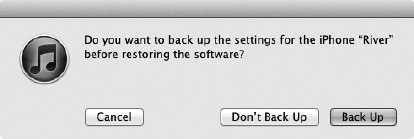
Figure 2–8. After a restore, you have the option of putting all your data back onto the iPhone.
Backup Box
This box allows you to choose how you want to back up your iPhone system and application data. You can back up to Apple's iCloud or to the local computer. Apple offers 5GB of cloud storage for free. You can easily consume that with backed-up data, let alone with application cloud-based documents. Additional iCloud storage costs $20/year for 15GB total (including your free 5GB), $40/year for 25GB total, and $100/year for 50GB total.
If you back up to your computer instead of the cloud, you'll save a bit of space—and potentially money. At the same time, you'll lose the “it just works” convenience of that backup. Also, if your computer dies for any reason, you will not have the off-site security of knowing your data is safe in the cloud. You'll need to tether your iPhone to your computer and allow the backup to occur during a tethered sync.
You may want to encrypt your iPhone backup by checking the “Encrypt iPhone backup” option. This allows you to set a password for your backed data. Be aware, if you lose that password, your data will be gone. You cannot recover your password through e-mail.
Options
You have several preferences in the Options box. To enable or disable any of the features, simply check or uncheck the box next to it.
Open iTunes when this iPhone is connected: This option is selected by default. It tells your computer to open iTunes when it detects that your iPhone is connected via USB. If this option is not selected, iTunes doesn't open when you connect your iPhone, and no data is synced to your device until you manually open iTunes and click the Sync button next to the Capacity bar.
NOTE: Even though iTunes does not launch or sync your data when this box is not selected, the iPhone is still charged.
Sync only checked songs and videos: When this option is selected, iTunes syncs only the songs in your library and playlists that have a check mark next to them in the iTunes library (see Figure 2–9).
Let's say you have a Greatest Hits playlist set to sync with the iPhone. In the playlist you have two copies of Michael Jackson's “Man in the Mirror” from two separate albums. You want to have only one copy of the song on the iPhone, but you don't want to remove the extra copy from the playlist. If you deselect one version of “Man in the Mirror” in the playlist and have “Sync only selected songs and videos” selected, the playlist syncs to your iPhone minus the extra “Man in the Mirror,” but the song remains in your playlist in your iTunes library.

Figure 2–9. Selected songs and an unselected song in iTunes
Sync with this Phone over Wi-Fi connection: This box must be checked if you want to sync the iPhone with your iTunes library over a Wi-Fi connection. This is why you need to sync your iPhone via a wired connection (the USB dock connector cable) the first time, so you can select this Sync over Wi-Fi connection box. Without this box being checked, your iTunes library has no way of knowing that it should be syncing with your iPhone over Wi-Fi.
Prefer standard definition video: When this box is checked, only the standard-definition version of any video in your iTunes library that has both standard and high-definition copies is synced. It's a good idea to keep this checked if you don't have a lot of space on your iPhone. A standard-definition version of a movie can save you up to four times the space of a high-definition movie.
Convert higher bit rate songs to 128 kbps AAC: Digital music comes in many formats and sizes, with the most popular being MP3 and AAC. Depending on how you obtained your music, whether buying it from the iTunes Store or ripping your collection from old CDs, your songs most likely have different encoding settings. A song encoded at 256Kbps takes up twice the space as a song encoded at 128Kbps. With the “Convert higher bit rate songs to 128 kbps AAC” option selected, any music synced to your iPhone is converted on the fly to the 128Kbps AAC format. The advantage of doing this is to save space on your iPhone by reducing higher bit rate songs to a perfectly acceptable 128Kbps.
NOTE: Unless you are an extreme audiophile with a gifted ear, you probably won't notice a difference between 128Kbps AAC file and 256Kbps versions of a digital music file.
Manually manage music and videos: With this option selected, music and videos are never automatically synced with your iPhone. The only way to add music and videos on the iPhone under this option is by dragging the songs or videos from the iTunes library onto the iPhone in the iTunes source list. Likewise, with this option selected, the only way to remove music or videos from your iPhone is by clicking the drop-down triangle next to the iPhone in iTunes' source list, navigating to your playlists selecting the song or video, and then pressing the Delete key on your computer's keyboard.
NOTE: Manually adding or removing music or video from your iPhone does not affect the files on your computer. Whenever a file is added to or deleted from the iPhone, it is just a copy of the file in your iTunes library. The original file always resides in your iTunes library until you delete it from there.
Configure Universal Access: The last thing on the Summary page is a Configure Universal Access button. Clicking this button opens a Universal Access box (see Figure 2–10) for setting visual and audible device assistance options for people who are hard of sight or hearing.
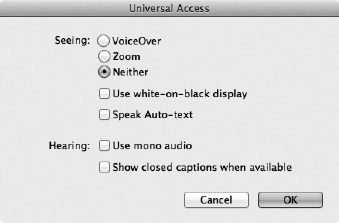
Figure 2–10. The Universal Access settings
Seeing: You have the option of selecting one of three radio buttons: Voice Over, Zoom, or Neither.
- VoiceOver makes your iPhone speak the name of a button or its function when the user touches it. It also speaks text. I explore the VoiceOver features in Chapter 16 of this book.
- Zoom allows the user to zoom into parts of the screen that normally don't support a magnifying or zoom function. When this option is selected, the user can double-tap any part of the iPhone's screen with three fingers to automatically zoom in at 200 percent. When zoomed in, you must drag or flick the screen with three fingers. Also, when you navigate to a new screen, Zoom always returns to the top middle of the screen.
Use white-on-black display: Selecting this option inverts the colors of the iPhone's screen so text appears white on a black background. The iPhone's entire screen looks like a photograph negative.
Speak Auto-text: With this option selected, autocorrected text is spoken aloud. An example of this is when spell check popups appear during typing.
Hearing: There are two accessibility features for the hearing impaired.
- Use mono audio: When this is selected, the stereo sounds of the left and right speakers are combined into a mono (single) signal. This option lets users who have a hearing impairment in one ear hear the entire sound signal with the other ear.
- Show closed captions when available: When this is selected, any video you have on your iPhone automatically displays closed captions if that video has captions embedded in it.
The Apps Tab
This is my favorite tab. It's the place where you get to decide which apps you want to put on your iPhone and arrange them with drag-and-drop simplicity. This tab is composed of two main sections: Sync Apps (see Figure 2–11) and File Sharing (see Figure 2–13). Let's get started.
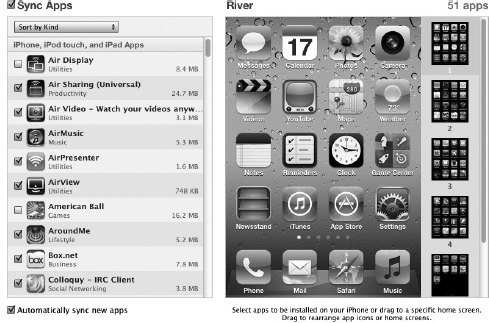
Figure 2–11. The Apps tab is where you choose the apps to put on your iPhone and howthey are arranged.
Sync Apps
Under the Sync Apps heading is a scrollable list of all the applications you have in your apps library in iTunes. You can sort the list by name, kind, category, or date downloaded. There's also a search field in the upper-right corner of iTunes if you're one of those people who has downloaded thousands of apps and can't scroll through all of them quickly.
In the apps list there is a check box to the left of the app's icon. To the right of the icon is the app's name, and below that are the app's category listing and the file size of the individual application. Any app that has a selected check box means the application is set to sync with the iPhone. Below the apps list is a check box labeled “Automatically sync new apps.” When this is selected, any new apps you've downloaded through iTunes are automatically synced with your iPhone on the next connection.
Next to the apps list is a visual representation of the screen of your iPhone. To the right of that are one or more smaller black screens with icons representing apps that are already on, or set to be synced with, your iPhone. You'll also see a completely gray screen below the last black one.
The easiest way to get apps on your iPhone is to find them in the apps list and simply drag them onto the virtual screen. As soon as you do, the app's check box is automatically selected in the app list.
You can drag around the apps on the virtual iPhone screen until you've arranged them in the order you like. It's also possible to grab the smaller black screens and move them up or down in the list, rearranging entire pages of apps on your iPhone. The black screen at the top of the list is the home page on your iPhone, and each one below that is a subsequent swipe away. The gray screen at the bottom is an extra screen should you want to create a new screen with apps.
To remove an app, hover your computer cursor over the app, and a little X appears in the upper-left corner. Click the X, and the app disappears from the screen. On the next sync, the app is removed from your iPhone. Don't worry; you can always get an app back by dragging it to the virtual iPhone's screen or by clicking the app in the list to the left.
NOTE: Apps that Apple ships on the iPhone cannot be removed from the device—they can only be repositioned.
Creating Folders
There's a way to create folders of apps on your iPhone home screen as well. Folders help you avoid constantly swiping screens to the left or right and make it easy to group similar apps together. To create a folder in the Apps tab, drag one app onto another on the virtual iPhone screen and release it. A folder is created with the two apps in it, and you can name the folder whatever you want. Drag more apps to the folder and release them to add them. In the folder in Figure 2–12, I've created a folder called Travel & WX that contains some of my favorite travel and weather apps.
To remove apps from the folder, drag them out or click the X that appears when you move your pointer over the app's icon. Folders contain up to 12 applications, and there can be up to 20 folders on a page. Similarly, each screen holds 20 apps (or folders of apps) including the ones docked at the bottom of the screen. The dock holds anywhere between zero and four apps. Any apps placed in the dock appear at the bottom of the iPhone no matter what app screen you've swiped to. Since the docked apps always appear at the bottom of any app screen, it's best to put the ones you use most frequently down there for quick access.
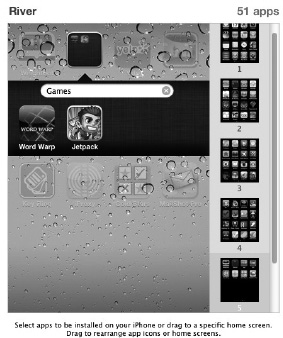
Figure 2–12. Creating a folder full of apps
File Sharing
iTunes enables you to easily share files between the iPhone and your computer. Beneath the File Sharing heading is an Apps box and a Documents box (see Figure 2–13). Any apps that are currently on your iPhone that support drag-and-drop file sharing appear in the Apps list here. To share a file with an application, select the application in the Apps list, find the file on your computer you want to share, and drag it into the Documents list. You can also click the Add button at the bottom of the Documents list to browse for the file on your computer.
To transfer a file from your iPhone back to your computer, select the file in the Documents list, click the “Save to” button at the bottom, and choose where you want to save the file on your computer. Alternatively, drag the file from the Documents list to your desktop.
To delete a file from an app that contains it, select the file in the document list, and press the Delete key on your computer. iTunes prompts for confirmation when deleting or replacing files. Click the Delete button in the confirmation dialog to complete the deletion. At this time, you cannot delete folders or read the contents of files stored in folders in the documents list.
As long as a file is shared inside an app, it is always backed up when you sync your iPhone to your computer.
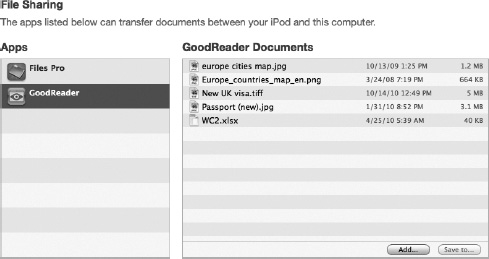
Figure 2–13. Apps that support drag-and-drop file sharing and their enclosed documents
NOTE: Just because you can drag a file to an app's Documents box doesn't mean that the app can open it. Apps are limited to working with files that the iPhone supports. For example, the iPhone does not support Microsoft's WMV video files. If you drag a WMV movie to an app, the app contains it but is still not able to play it. To work around this issue, you need to download the Yxplayer app—it recognizes the WMV files and plays them.
The Ringtones Tab
The Ringtones tab (Figure 2–14) allows you to import custom ringtones you've purchased from the iTunes Store and use them to notify you not only of incoming phone calls but also of FaceTime video calls.

Figure 2–14. The Ringtones tab
To sync ringtones, select the Sync Ringtones box. Next, choose whether you want to sync all of your ringtones or just selected ones. If you choose “Selected ringtones,” the Ringtones box appears, listing all of the ringtones you have stored in iTunes. Check the ringtones you want to sync.
Synchronization Options
In many of the remaining tabs, iTunes offers a primary checkbox allowing you to sync items or not. You can sync music, movies, TV shows, podcasts, iTunes U classes, books, and photos. For the first four of these, you'll be given the option to synchronize items automatically.
To choose that automatic option, check the appropriate box in each tab (“Sync Music,” “Sync Movies,” and so on), check the automatic box (“Automatically include”), and then choose how you want iTunes to select those items.
- Recent items: Select some number of recently added items (typically one, three, five, ten, or all) to synchronize to your device.
- Unplayed or unwatched items: When selected, you can choose from all unplayed/unwatched items or some. Pick some number of the most recent selections, or if you want to catch up with media that's been sitting around for a while, choose the least recent unplayed selections.
- New items: These work in much the same way as unplayed items in that you can pick a certain number of items. The difference between new and unplayed/unwatched is that an item is considered “unplayed” (or “unwatched”) until it's been fully listened to or watched. After that, it is played/watched. New means the item has never been accessed at all. This ensures the material synced to your device is completely fresh.
Further automatic options allow you to decide whether these choices are selected from the entire collection or from selected items. This varies by tab.
To choose items manually, uncheck the “Automatically include” option and use the on-screen selection elements for each tab to pick which items you want to synchronize to your iPhone.
The Music Tab
The Music tab is used to—what else? Set up syncing of music (see Figure 2–15). Make sure the Sync Music check box is selected at the top. In the box below it are two radio buttons.

Figure 2–15. The Music tab allows you to select which songs, playlists, and artists you want to sync to your iPhone.
Entire music library: When this is selected, the entire music library is synced to your iPhone. Note that your entire library is synced only if you have the storage space available on your iPhone. If you have more music than the iPhone can hold, the remainder of the music stops syncing once the iPhone is full.
Selected playlists, artists, albums and genres: Selecting this option displays four boxes listing all of the playlists, artists, and genres in your iTunes library. Go through and select the check boxes of the playlists, artists, and genres you want on your iPhone.
Include music videos: Selecting this check box transfers any music videos associated with playlists, artists, or genres to the iPhone.
Include voice memos: If you select this check box, any voice memos stored in your iTunes library are synced with your iPhone.
Automatically fill free space with songs: This check box a ppearsonly if you've chosen the “Selected playlists, artists, and genres” radio button. If it's selected, once all your other files (movies, books, photos, and so on) have been synced to your iPhone, any leftover free space is filled with music. I don't recommend selecting this option. It severely limits your ability to create any new documents or store any photos you take on your iPhone since there won't be any space left in which to store them.
The Movies Tab
The iTunes Store offers a large collection of movies for rent or purchase that you can download and sync to your iPhone. The Movies tab, shown in Figure 2–16, provides several ways of transferring your movies onto the iPhone.

Figure 2–16. The Movies tab allows you to select which movies you want to sync to your iPhone.
To sync your movies, first make sure the Sync Movies check box is selected (see Figure 2–16). Three check boxes are displayed on the Movies tab:
Automatically include: If this check box is selected, you'll be able to access a pop-up list of preset options to make your movie syncing experience easier. From the pop-up list, you can choose to sync all your movies (not a good idea because one hour of video can take up to half a gigabyte of space) or decide to save some space.
If you'd like to go the space-saving route, select the one, three, five, or ten “most recent movies” preset. You also have the option of selecting the “all unwatched” movies preset, which adds all the movies in your library that have not been watched yet. Other preset options include syncing one, three, five, or ten of your “most recent unwatched movies” or one, three, five, or tenof your “least recent unwatched movies.”
Movies: If the “automatically include” check box is selected and the drop-down list is set to anything but “all,” you also have the option of selecting additional movies from your iTunes library. With the “automatically include” box unchecked, you can manually select as many of your movies as you want (see Figure 2–17).
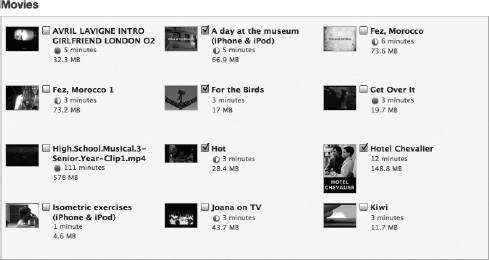
Figure 2–17. The Movies check box allows you to select individual movies to sync to your iPhone.
Include Movies from Playlists: This box, shown in Figure 2–18, provides the option of including movies found in your iTunes playlists.
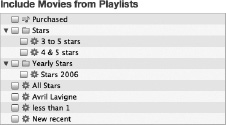
Figure 2–18. This box allows you to sync movies from your iTunes playlists.
The TV Shows Tab
The iTunes Store offers large collections of TV shows available for purchase and download. All of these shows can be synchronized to your iPhone for viewing. You can purchase individual episodes à la carteor buy a Season Pass. With the latter choice, you pay for the entire season at once, often at a slight discount, and new episodes are automatically downloaded when they are available.
To sync TV shows, first make sure that the Sync TV Shows check box is selected (see Figure 2–19). On the TV Shows tab below are three check boxes similar to those on the Movies tab.

Figure 2–19. The TV Shows tab is used to select the shows you want to sync to your iPhone.
Automatically include: Select this check box to access a pop-up displaying preset options to simplify your TV show syncing experience. From the drop-down list, you can choose to sync all your TV shows; again, this is not a good idea if you watch a lot of TV on your iPhone since an hour of video can occupy up to half a gigabyte of space). There is also an “all unwatched” option and several presets including syncing only the newest shows, the newest unwatched shows, or the oldest unwatched shows. With all these options, the presets can be applied to all shows or just selected TV shows.
The Shows and Episodes boxes: If the “automatically include” check box is selected and set to anything but “all,” you also have the option of selecting additional TV shows from your iTunes library (see Figure 2–20). With the “automatically include” check box deselected, you are able to manually select as many of your TV shows as you want.

Figure 2–20. The Shows check box allows you to select TV series to sync to your iPhone. In the box to the left you can select the episodes to sync.
Include Episodes from Playlists: This box gives you the option of including any TV show episodes found in your iTunes playlists (see Figure 2–21).
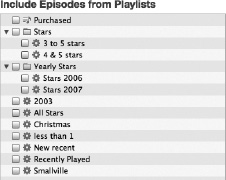
Figure 2–21. This box allows you to sync any TV shows found in your iTunes playlists.
The Podcasts Tab
Many people use iTunes to subscribe to their favorite podcasts. Podcasts are audio and video programs delivered over the Internet on a subscription basis; that is, you subscribe to a podcast for free and receive a series of episodes on a particular topic. Numerous podcasts are available, with topics including entertainment and advice, tech shows, politics, news, and much more. iTunes monitors your podcast subscriptions and automatically downloads new episodes when they become available. The Podcasts tab gives you control over which shows are synchronized to your iPhone.
The Podcasts tab (see Figure 2–22) has a similar look and feel to the Movies and TV Shows tabs. To sync podcasts, first make sure the Sync Podcasts check box is selected. Below the check box are three boxes on the Podcasts tab.

Figure 2–22. The Podcasts tab allows you to select the podcasts to sync to your iPhone.
Automatically include: Selecting this check box displays a pop-up list with several options, the first of which is to sync all of your podcasts. If you're subscribing only to audio podcasts, this might not be a bad idea, but be sure to keep in mind the space limitations that come with syncing video.
Other options include syncing all unplayed or all new podcasts. Apple thoughtfully provided presets for syncing only the newest, the most or least recent unplayed podcasts, or the most or least recent new podcasts. Those presets can be applied to all podcasts or just to those that you've selected.
The Podcasts and Episodes boxes: If the “automatically include” check box is selected and set to anything but “all,” you also have the option of selecting additional podcasts from your iTunes library (see Figure 2–23). With the check box deselected, manually select as many or as few podcasts as you want.
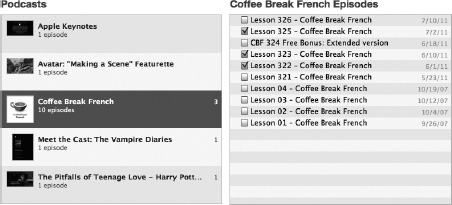
Figure 2–23. The Podcasts check box allows you to select podcasts to sync to your iPhone. In the dialog to the left you select episodes of a podcast series to sync.
Include Episodes from Playlists: This dialog (see Figure 2–24) provides the option of including any podcast episodes found in your iTunes playlists.

Figure 2–24. Have podcasts in your iTunes playlists? Here's where you can choose to sync those episodes to your iPhone.
The Books Tab
With the iBooks app installed on your iPhone, you have the ability to buy and read e-books or view PDF files on your device. I'll explore the iBookstore and iBooks app in Chapter 11, but for now you just need to know that the Books tab in the iPhone preferences window is where you control the books and PDF files that are synced to your iPhone (Figure 2–25).

Figure 2–25. The Books tab allows you to select which books and PDF files you want to sync to your iPhone.
Make sure the Sync Books check box is selected. In the area below it are two radio buttons; “All books“ syncs every book in your iTunes library, and “Selected books“ allows you to sync only the books and/or PDFs selected in the Books box further down the page (see Figure 2–26).
NOTE: Even if you have 300 books in your iTunes library, you might as well sync them all. An e-book takes up very little storage. As a matter of fact, War and Peace, one of the largest books ever written, takes up only a tiny 1.2 MB of storage. That's less than 50 percent of the size of a single three-minute 128Kbps AAC music file. Illustrated books take up more space, but even then they won't take up much more storage than a few song files. Don't worry about a cluttered library, either. You'll learn how to organize your books in Chapter 11.

Figure 2–26. The Books check box allows you to select individual books to sync to your iPhone.
Below the Books box is a Sync Audiobooks check box (see Figure 2–27) and two options: “All audiobooks” or “Selected audiobooks.”
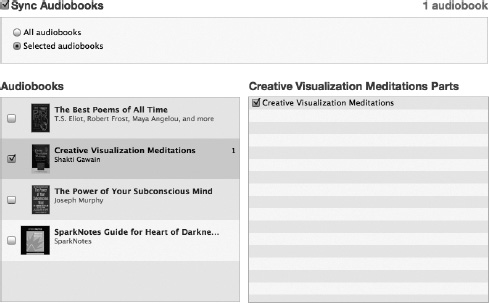
Figure 2–27. The Sync Audiobooks interface
As you'd expect, selecting “All audiobooks” syncs all audiobooks in your iTunes library with your iPhone, while choosing “Selected audiobooks” displays the familiar layout you've seen on the other media tabs.
Audiobooks and Parts: In the Audiobooks box, you manually select the audiobooks you want to sync. Some audiobooks have separate files, or parts, that usually designate chapters (see Figure 2–27). You can select only the parts you want to sync for any audiobook in the Parts box. If the “automatically include” check box is selected and set to anything but “all,” you also have the option of selecting additional audiobooks from your iTunes library. With the “automatically include” check box deselected, feel free to manually select as many or as few of your audiobooks or parts as you want.
Include Audiobooks from Playlists: This box gives you the option of syncing any audiobooks included in your iTunes playlists (see Figure 2–28).
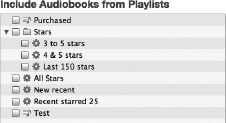
Figure 2–28. This box allows you to sync any audiobooks found in your iTunes playlists.
NOTE: Audiobooks are different from their e-book brethren, since the former are long audio files that can be quite large. If you have dozens of audiobooks, consider transferring only a select few from iTunes to your iPhone to save space.
The Photos Tab
The ability to view photos on my iPhone was pretty low on my list of reasons to buy one. Ironically, viewing photos is now one of my favorite things to do with my iPhone. I'll discuss viewing photos on your iPhone in Chapter 12, but for now I'll say that the experience is delightfully different than viewing photos on your desktop. There's nothing like physically holding digital photos in your hand and swiping through them on the gorgeous display of the iPhone.
To get photos onto your iPhone, make sure the “Sync Photos from” check box on the Photos tab is selected (see Figure 2–29), and then choose where you want to sync your photos from. On the Mac, your options will be iPhoto 4.0.3 or newer, Aperture 3.0.2 or newer, or any folder on your computer. On a Windows computer, your options will be Adobe Photoshop Elements 3.0 or newer or any folder on your computer.

Figure 2–29. The Photos tab allows you to select which photos you want to sync to your iPhone.
In the box below the check box, there are three options:
All photos, albums, events, and faces: Selecting this option syncs every photo from your selected photo application or folder onto the iPhone. Again, I recommend against this if your photo collections are as large as mine (I have somewhere around 80GB of travel photos on my Mac). If you have only a few thousand photos, load 'em up!
NOTE: You can add photos from another iPhone or digital camera to your iPhone via the Camera Connection Kit. The $29 kit (available at http://store.apple.com) includes two adapters—one for connecting a camera through a USB 2.0 cable and the other for reading SD memory cards.
Selected albums, events, and faces, and automatically include: Selecting this option displays boxes for albums, events, and faces further down the page (see Figure 2–30). From these boxes you can choose which iPhoto albums and events to sync. You can also choose whether you want to sync faces. Faces is a feature in iPhoto that uses facial recognition capabilities to create collections of photos in which a certain person appears.
When you select any of the check boxes next to a certain album, event, or face, the photo count of that selection is displayed to the right. Choosing the “Selected albums, events, and faces, and automatically include” option, you are presented with a list of options allowing you to select all, none, or a preset date-specific range of iPhoto event collections.
Include video: When this check box is selected, any videos made with your digital camera that appear in any of your selected albums are transferred to the iPhone. Keep in mind that video can quickly use up storage space.
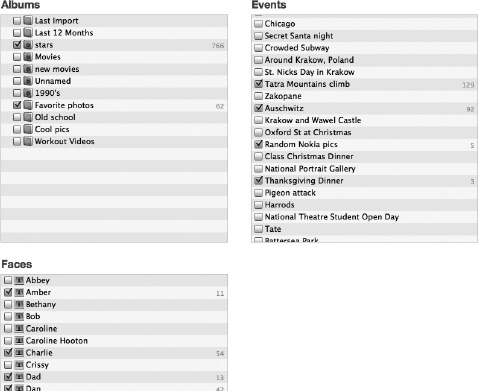
Figure 2–30. Choose which iPhoto photo albums, events, and faces to sync.
The Info Tab
The final tab to discuss (although it's actually listed second in iTunes) is the Info tab (see Figure 2–31), and it's all about you. This is the tab that allows you to sync your most personal information with the iPhone, including contacts, calendars, and e-mail. This tab has five sections: Sync Address Book Contacts, Sync iCal Calendars, Sync Mail Accounts, Other, and Advanced.
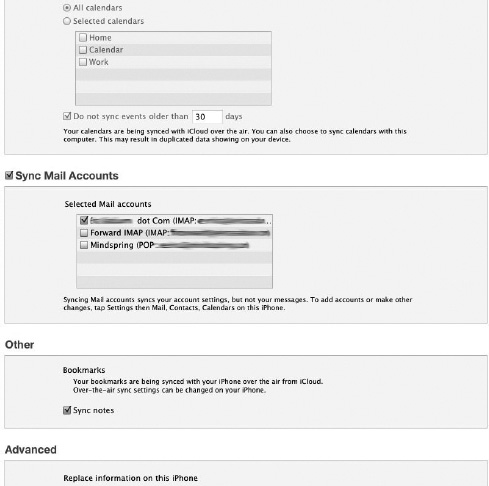
Figure 2–31. The Info tab allows you to sync mail accounts, contacts, calendars, bookmarks, and notes. The tab is way too long to show entirely in a single image.
If you have been using Outlook on Windows or Mail, iCal, and Address Book on a Mac, then you'll already have everything you need to sync your information to your iPhone. You just need to tell the iPhone how you want to sync that information.
NOTE: If you are using Apple's iCloud service (www.icloud.com), the Sync Address Book Contacts and Sync iCal Calendars options are deselected after your first iPhone sync, and a message states that your contacts and calendars are being synced over the air via iCloud.
Sync Address Book Contacts
To sync address book contacts, you need to be using one of the following applications: Address Book or a recent version of Microsoft Entourage on a Mac or Windows Address Book or a recent version of Microsoft Outlook on Windows.
Select the Sync Address Book Contacts check box (see Figure 2–32), which gives you the option of syncing all the contacts in your address book or just those from selected groups.
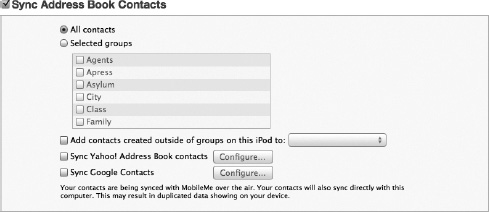
Figure 2–32. Your address book syncing options
Add contacts created outside of groups on this iPhone to: When this check box is selected, a drop-down list of all your address book groups appears. If you create a new contact on your iPhone and don't assign the contact to a group, that contact is automatically put into the group you select here.
Sync Yahoo! Address Book contacts: When this check box is selected, Yahoo! Address Book contacts are automatically synced with your iPhone address book. You must agree with the dialog box that asks you to acknowledge that you are allowing the iPhone to sync to your Yahoo! account. Next, you are asked to enter your Yahoo! ID and password. Once you've done this, your contacts are set to sync. Clicking the Configure button allows you to enter a different Yahoo! ID.
Sync Google Contacts: When this check box is selected, Google contacts are automatically synced with your iPhone address book. You must agree with the dialog box that asks you to acknowledge that you are allowing your iPhone to sync to your Google account. Next, you are prompted to enter your Google ID and password. Once you've done this, your contacts are ready to sync. Clicking the Configure button allows you to enter a different Google ID.
Sync iCal Calendars
To sync your calendars, you need to be using one of the following: iCal or a recent version of Microsoft Entourage on a Mac or a recent version of Microsoft Outlook on Windows.
To set up calendar syncing, select the Sync iCal Calendars check box (see Figure 2–33). Just like with contacts, you then have the option of syncing all your calendars or just selected ones.
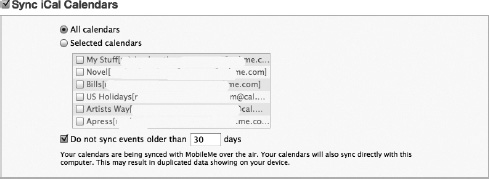
Figure 2–33. Your calendar syncing options
Do not sync events older than: With this check box selected, events that are more than a specified number of days old are not synced. The default number of days is 30, but you can enter anything up to 99,999 days.
NOTE: A great place to find premade calendars for holidays, school events, or your favorite sporting teams is at www.icalshare.com.
Sync Mail Accounts
All of the mail accounts you have set up in Mac OS X Mail or Microsoft Outlook appear here (Figure 2–34). You have the option of selecting or deselecting any of the accounts. Accounts that are not selected do not appear in the iPhone's Mail app.

Figure 2–34. Your e-mail account syncing options
Other
Apple should really have named this section “Bookmark and Notes Syncing,” but Apple opted for “Other.” Here you can sync bookmarks from the web browser on your computer to the Safari web browser on the iPhone (see Figure 2–35). Again, if you have an iCloud or MobileMe account, your bookmarks are synced over the air. If not, select the Sync Bookmarks check box, and choose your browser from the drop-down menu. On the Mac, bookmark syncing is supported for Safari. On a Windows computer, bookmark syncing supports Safari and Microsoft Internet Explorer 8 or newer.

Figure 2–35. Your bookmark and note syncing options
This section also allows you to sync notes to your iPhone. Note syncing works only with Mac OS X Mail on a Mac, Outlook on Mac, or Microsoft Outlook 2003 or 2007 on Windows. To enable note syncing, select the check box.
Advanced
When selected, this section allows you to replace contacts, calendars, mail accounts, and notes on the iPhone with information from your computer (see Figure 2–36). This is a handy feature if your information gets out of sync and you want to make sure that everything you see on your computer matches what is on the iPhone.

Figure 2–36. Your advanced syncing options
When you select the respective check boxes, iTunes overwrites the information on your iPhone during the next sync only. After that sync, normal syncing resumes between your iPhone and computer.
NOTE: If your calendars and contacts are being synced via iCloud, you will not be able to select their check boxes in the Advanced section.
iTunes Device Settings
iTunes has several preferences for the iPhone. To access these on a Mac, launch iTunes and select iTunes ![]() Preferences from the menu bar, or select Edit
Preferences from the menu bar, or select Edit ![]() Preferences from the menu bar if you are using Windows. The Preferences window pops up with a series of icons running along the top. The only one we are interested in for the iPhone is the Devices icon. Click the Devices icon (it looks like an iPhone), and you'll be presented with the Devices preferences window (see Figure 2–37).
Preferences from the menu bar if you are using Windows. The Preferences window pops up with a series of icons running along the top. The only one we are interested in for the iPhone is the Devices icon. Click the Devices icon (it looks like an iPhone), and you'll be presented with the Devices preferences window (see Figure 2–37).
Here you'll find settings for devices that interact with iTunes. These devices can include the iPhone, iPad, iPhone, Apple TV, and AirPort Express.
Device backups: Any time your iPhone is synced, iTunes creates a backup of its contents. Any backups of iPad, iPhone, or iPhone devices are listed under “Device backups.” The name of the device is listed along with the date it was last backed up. Hover your cursor over the name of the iPhone to view its serial number.
Although iTunes keeps multiple dated, partial backups of your device, it's still a good idea to make copies of your backups on an external hard drive. iTunes places the original backup files in the following locations:

Figure 2–37. The iTunes Devices preferences window
- Mac: ~/Library/Application Support/MobileSync/Backup/
- Windows XP: Documents and Settings(username)Application DataApple ComputerMobileSyncBackup
- Windows Vista: Users(username)AppDataRoamingApple ComputerMobileSyncBackup
The list of information backed up by iTunes is a long one:
- Safari bookmarks, cookies, history, and currently open pages
- Map bookmarks, recent searches, and the current location displayed in Maps
- Application settings, preferences, and data
- Contacts
- Calendars
- CalDAV and subscribed calendar accounts
- YouTube favorites
- Wallpapers
- Notes
- Mail accounts
- Autocorrect dictionaries
- Camera Roll
- Home screen layout and web clips
- Network settings (saved Wi-Fi hotspots, VPN settings, network preferences)
- Paired Bluetooth devices (which can be usedonly if restored to the same iPhone that did the backup)
- Keychain (This includes e-mail account passwords, Wi-Fi passwords, and passwords you enter into web sites and some other applications. The keychain can be restored from backup only to the same iPhone. If you are restoring to a new device, you will need to fill in these passwords again.)
- Managed configurations/profiles
- Email account configurations
- App Store application data (except the application itself and its tmp and Caches folders).
- Per-app preferences allowing use of location services
- Offline web application cache/database
- Autofill for web pages
- Trusted hosts that have certificates that cannot be verified
- Web sites approved to get the location of the device
- In-app purchases
To delete an iPhone backup, select it from the “Device backups” list, and click the Delete Backup button. Confirm the deletion by clicking the Delete Backup button in the dialog that appears.
Prevent iPhones, iPhones, and iPads from syncing automatically: Select this box if you want to disable automatic syncing when the iPhone is connected to your computer. To sync, you'll need to manually click the Sync button at the bottom of the iTunes preferences window for iPhone.
Restoring
If you ever experience problems with your iPhone, you can choose to restore it. There are two restore options: restore to factory default and restore from backup. Restoring to factory default restores your iPhone to its original factory settings, as if you've just turned it on for the first time. Restoring from backup restores the iPhone from its last saved backup file.
To restore to factory settings, select the iPhone from the devices listin iTunes, select the Summary tab, and then click Restore (this deletes all data on iPhone and restores to factory settings). When prompted by iTunes, select the option to restore your settings.
To restore from backup, right-click (or Ctrl+click) the iPhone in the devices list in iTunes and select Restore from Backup. The iPhone is restored from the backup selected from the “Device backups” list.
NOTE: If you've set up password encryption on your iPhone backups (covered earlier in this chapter), you cannot restore from the encrypted backup if you forget the password. Be sure to choose passwords that are easy to remember!
Syncing via iCloud
If you want, you need never connect to your iPhone to a home computer. You can activate it at an Apple store and then use iCloud synchronization, updates, and backups. To enable your iPhone to synchronize directly through iCloud, set Settings ![]() iCloud Storage & Backup
iCloud Storage & Backup ![]() iCloud Backup to ON. Keep in mind that backups will occupy a large part of your initial 5GB free storage. You may want to move up to a paid tier if you take this route with your iPhone.
iCloud Backup to ON. Keep in mind that backups will occupy a large part of your initial 5GB free storage. You may want to move up to a paid tier if you take this route with your iPhone.
You can update your iPhone to new firmware without ever using iTunes. Choose Settings ![]() General
General ![]() Software Update. New updates appear here and can be installed “over the air” using a Wi-Fi connection.
Software Update. New updates appear here and can be installed “over the air” using a Wi-Fi connection.
To reset your iPhone, select Settings ![]() General
General ![]() Reset
Reset ![]() Erase All Content and Settings. This returns your iPhone to a factory-fresh state.
Erase All Content and Settings. This returns your iPhone to a factory-fresh state.
Summary
In this chapter, you explored options for syncing media and data with your iPhone. You discovered where to get your media and how to make sure your iPhone/iTunes sync preferences stick. To wind things up, here is a quick overview of some key points from this chapter:
- The Capacity bar is always visible in the iPhone preferences and is an easy indicator of how much storage is available on your iPhone.
- No change made to the iPhone preferences is complete until you click the Apply button. Likewise, if you accidentally make a change you don't want, you can always click the Cancel button.
- It is important to manage what data you sync with your iPhone. Syncing all of your music may not leave enough storage for photos and videos.
- Syncing and organizing apps is easy to do when you use the visual representation of your iPhone under the Apps tab. If you have a lot of apps, syncing can be a slow process. Waiting can be a pain, but it's best never to interrupt a sync.
- Syncing of movies, music, TV shows, podcasts, books, and photos is pretty straightforward, and once you've mastered how to sync one form of media, the rest are a cinch.
